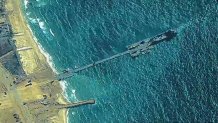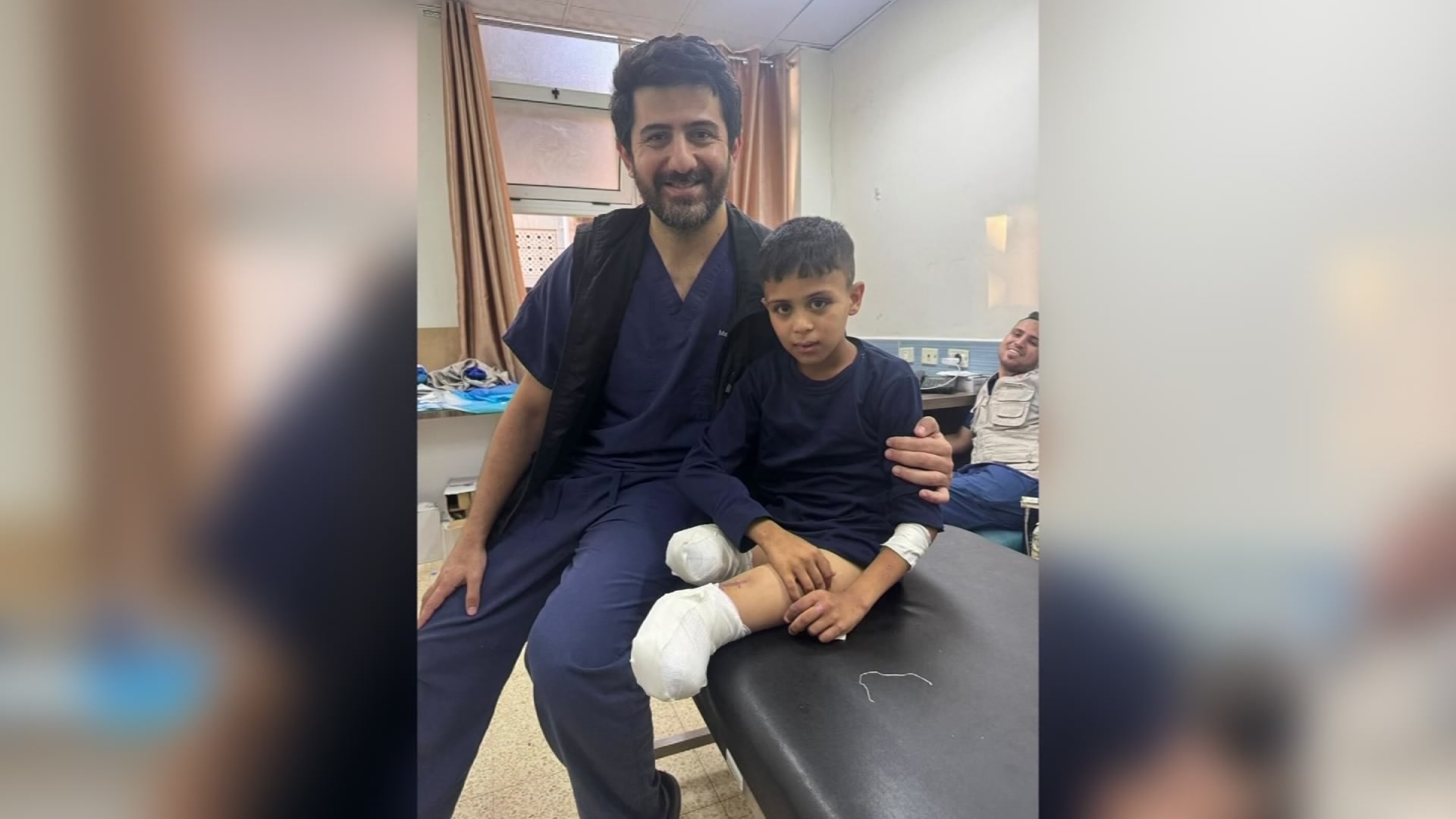Trucks carrying badly needed aid for the Gaza Strip rolled across a newly built U.S. floating pier into the besieged enclave for the first time Friday as Israeli restrictions on border crossings and heavy fighting hinder food and other supplies reaching people there.
The shipment is the first in an operation that American military officials anticipate could scale up to 150 truckloads a day entering the Gaza Strip as Israel presses in on the southern city of Rafah as its 7-month offensive against Hamas rages on.
But the U.S. and aid groups also warn that the pier project is not considered a substitute for land deliveries that could bring in all the food, water and fuel needed in Gaza. Before the war, more than 500 truckloads entered Gaza on an average day.

Get DFW local news, weather forecasts and entertainment stories to your inbox. Sign up for NBC DFW newsletters.
Aid agencies say they are running out of food in southern Gaza and fuel is dwindling, while the U.S. Agency for International Development and the World Food Program say famine has already taken hold in Gaza’s north.
Troops finished installing the floating pier on Thursday, and the U.S. military's Central Command said the first aid crossed into Gaza at 9 a.m. Friday. It said no American troops went ashore in the operation.
“This is an ongoing, multinational effort to deliver additional aid to Palestinian civilians in Gaza via a maritime corridor that is entirely humanitarian in nature, and will involve aid commodities donated by a number of countries and humanitarian organizations,” the command said.
The Pentagon said no backups were expected in the distribution process, which is being coordinated by the United Nations.
The U.N. humanitarian aid coordinating agency said the start of the operation was welcome but not a replacement for deliveries by land.
“I think everyone in the operation has said it: Any and all aid into Gaza is welcome by any route,” spokesperson Jens Laerke, of the Office for the Coordination of Humanitarian Affairs, told journalists in Geneva on Friday. Getting aid to people in Gaza “cannot and should not depend on a floating dock far from where needs are most acute.”
The U.N. earlier said fuel deliveries brought through land routes have all but stopped and that would make it extremely difficult to bring the aid to Gaza’s people.
“It doesn’t matter how the aid comes, whether it’s by sea or whether by land, without fuel, aid won’t get to the people,” U.N. deputy spokesperson Farhan Haq said.
Pentagon spokesperson Sabrina Singh said the issue of fuel deliveries comes up in all U.S. conversations with the Israelis. She also said the plan is to begin slowly with the sea route and ramp up the truck deliveries over time as they work the kinks out of the system.
Israel fears Hamas will use fuel in the war, but it asserts it places no limits on the entry of humanitarian aid and blames the U.N. for delays in distributing goods entering Gaza. Under pressure from the U.S., Israel has opened a pair of crossings to deliver aid into the territory’s hard-hit north in recent weeks.
It has said that a series of Hamas attacks on the main crossing, Kerem Shalom, have disrupted the flow of goods. The U.N. says fighting, Israeli fire and chaotic security conditions have hindered delivery. There have also been violent protests by Israelis that disrupted aid shipments.
Israel recently seized the key Rafah border crossing in its push against Hamas around that city on the Egyptian border, raising fears about civilians' safety while also cutting off the main entry for aid into the Gaza Strip.
U.S. President Joe Biden ordered the pier project, expected to cost $320 million. The boatloads of aid will be deposited at a port facility built by the Israelis just southwest of Gaza City and then distributed by aid groups.
U.S. officials said the initial shipment totaled as much as 500 tons of aid. The U.S. has closely coordinated with Israel on how to protect the ships and personnel working on the beach.
But there are still questions about the safety of aid workers who distribute the food, said Sonali Korde, assistant to the administrator of USAID's Bureau for Humanitarian Assistance, which is helping with logistics.
“There is a very insecure operating environment,” and aid groups are still struggling to get clearance for their planned movements in Gaza, Korde said.
That concern was highlighted last month when Israeli strike killed seven relief workers from World Central Kitchen whose trip had been coordinated with Israeli officials. The group had also brought aid in by sea.
Pentagon officials have made it clear that security conditions will be monitored closely and could prompt a shutdown of the maritime route, even if just temporarily. Navy Vice Adm. Brad Cooper, a deputy commander at the U.S. military’s Central Command, told reporters Thursday that “we are confident in the ability of this security arrangement to protect those involved.”
Already, the site has been targeted by mortar fire during its construction, and Hamas has threatened to target any foreign forces who “occupy” the Gaza Strip.
Biden has made it clear that there will be no U.S. forces on the ground in Gaza, so third-country contractors will drive the trucks onto the shore.
Israeli forces are in charge of security on shore, but there are also two U.S. Navy warships nearby that can protect U.S. troops and others.
The aid for the sea route is collected and inspected in Cyprus, then loaded onto ships and taken about 200 miles (320 kilometers) to the large floating pier off the Gaza coast. There, the pallets are transferred onto the trucks that then drive onto the Army boats, which will shuttle the trucks from the pier to a floating causeway anchored to the beach. Once the trucks drop off the aid, they return to the boats.
Gambrell reported from Dubai, United Arab Emirates. Associated Press writer Jamey Keaten contributed from Geneva.



